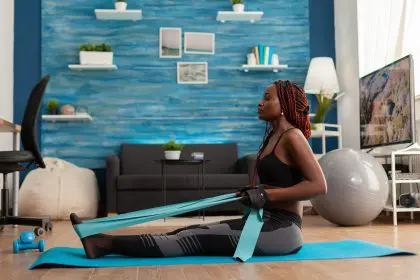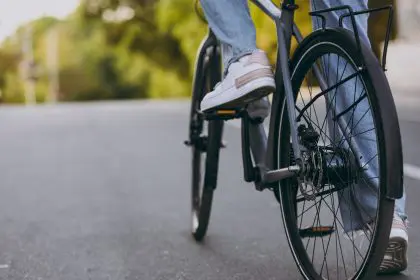Getting your body moving doesn’t just keep you fit — it might actually turn back the clock on your brain, according to fascinating new research.
How science discovered the mind-body connection
The latest findings from Penn State College of Medicine reveal something many of us hoped was true: physical movement directly enhances our mental processing abilities in measurable ways. Using innovative mobile technology, researchers tracked participants throughout their daily lives, prompting them five times daily to complete simple brain games that measured cognitive processing speed.
What makes this research particularly valuable is its real-world approach. Rather than relying solely on laboratory conditions, scientists observed people in their natural environments, creating a clearer picture of how everyday movements affect brain function. Participants documented their activity levels alongside these cognitive tests, providing researchers with unprecedented insights into the relationship between movement and mental performance.
The results paint a promising picture for anyone looking to maintain or enhance their cognitive abilities without dramatic lifestyle changes.
The four-year brain boost that surprised researchers
Perhaps the most remarkable finding was just how substantial the cognitive improvements were from even minimal physical activity. Participants engaging in light physical movement experienced significant boosts in their mental reaction times — approximately 60 milliseconds faster than their sedentary counterparts.
While 60 milliseconds might sound insignificant, researchers equate this improvement to reducing one’s cognitive age by about four years. Imagine performing mental tasks with the quickness and clarity you had four years ago, simply by incorporating more movement into your day.
This discovery challenges the common belief that only intense exercise benefits brain health. The research shows that even casual, everyday movements contribute significantly to cognitive wellbeing.
The 3 levels of activity and their brain benefits
The research team categorized physical activities into three distinct intensity levels, each offering cognitive advantages:
Light activities included casual walking, light household cleaning, and leisurely strolling. These required minimal effort but still delivered measurable cognitive improvements.
Moderate activities encompassed brisk walking, recreational cycling, and casual sports. These showed enhanced benefits over light activities but remained accessible to most people.
Vigorous activities like running, intense cycling, and strenuous workouts provided maximum benefits but weren’t necessary to see improvements.
The most encouraging aspect of these findings is that even the lightest category of movement showed meaningful cognitive benefits. For individuals with mobility limitations, health concerns, or tight schedules, this research offers hope that small movements matter.
What happens in your brain when you move
Physical activity triggers multiple neurological processes that enhance cognitive function in several key ways:
Neurotransmitter release: Movement stimulates the production of dopamine and serotonin, which regulate mood and improve mental clarity. This chemical release enhances focus while reducing stress that can cloud thinking.
Cardiovascular improvements: Even moderate activities promote healthier blood flow throughout the body, including the brain. This increased circulation delivers oxygen and nutrients essential for optimal brain performance.
Frontal lobe circulation: The brain’s frontal lobe, responsible for critical thinking and decision-making, receives enhanced blood flow during physical activity. This increased circulation supports sharper mental processing and improved cognitive function.
Neural network activation: Movement stimulates neural networks throughout the brain, creating greater responsiveness, faster processing, and heightened mental alertness.
These neurological responses work together to create both immediate cognitive improvements and long-term brain health benefits.
Easy ways to incorporate brain-boosting movement
The truly revolutionary aspect of this research is how accessible these cognitive benefits are. You don’t need expensive equipment, gym memberships, or dramatic lifestyle changes to improve brain function through movement.
Consider these simple strategies to incorporate more movement into your daily routine:
Schedule walking breaks throughout your workday. Set a timer to remind yourself to get up and move around for 5-10 minutes every hour. These brief movements can refresh your mind and improve concentration when you return to your tasks.
Take the stairs instead of elevators or escalators when possible. This simple choice adds valuable movement to your day without requiring extra time.
Transform household activities into brain-boosting exercises. Activities like gardening, cleaning, organizing, or even cooking involve physical movement that contributes to cognitive benefits.
Join movement-based social activities that combine physical activity with social engagement. Dance classes, walking groups, recreational sports, or yoga provide both physical benefits and social connections that further support brain health.
Break large movement goals into smaller, manageable segments throughout your day. Three 10-minute walks offer similar benefits to one 30-minute walk, making it easier to fit activity into busy schedules.
Find opportunities to stand rather than sit whenever possible. Whether it’s while talking on the phone, watching television, or working at an adjustable desk, standing activates more muscles and promotes better circulation.
Park farther from entrances to naturally incorporate more walking into your routine. These extra steps add up over time, contributing to both physical health and cognitive function.
Explore playful movement options that feel enjoyable rather than obligatory. Dancing to favorite music, playing active games with children, or exploring nature trails can make movement feel like a reward rather than a chore.
Consider active transportation when feasible. Walking or cycling for short errands or commutes combines practicality with brain-boosting movement.
Create environmental reminders that prompt movement throughout your home or workspace. Strategically placed exercise equipment, comfortable walking shoes by the door, or movement reminder notes can encourage consistent activity.
The key is finding movement patterns that feel sustainable and enjoyable within your lifestyle and physical capabilities.
Why this research matters for everyday life
This research fundamentally changes how we should think about physical activity. Rather than viewing movement as something we “should” do for general health or weight management, we can recognize it as essential brain maintenance.
For busy professionals, this means those movement breaks aren’t indulgences that distract from productivity—they’re investments that enhance mental performance. For older adults concerned about cognitive decline, this research offers accessible strategies to maintain brain function. For parents and educators, it highlights the importance of movement for developing minds.
The neurological benefits of movement appear to be universal across age groups, though the research suggests that older adults may experience even more pronounced cognitive gains from regular physical activity.
Perhaps most significantly, this research offers hope to those who find traditional exercise challenging or inaccessible. The finding that even light movements contribute meaningfully to brain health means virtually everyone can take steps toward better cognitive function, regardless of fitness level, physical limitations, or time constraints.
Moving forward with movement
As we continue learning about the profound connection between physical movement and brain function, the message becomes increasingly clear: our bodies and minds function as an integrated system where movement nourishes thinking.
The implications extend beyond individual benefits. Workplaces that incorporate movement opportunities may see enhanced employee cognition and productivity. Educational settings that include physical activity throughout the day may support better learning outcomes. Healthcare approaches that emphasize movement could complement traditional treatments for various conditions affecting cognitive function.
For individuals seeking to maintain or enhance their brain power, the path forward is refreshingly simple: find ways to move more often throughout your day. Whether through structured exercise or simply reducing sedentary periods with light activity, these movements create measurable improvements in how your brain processes information.
The research confirms what many have intuitively sensed—that movement makes us feel mentally sharper. Now science has quantified this benefit, showing that something as simple as a brief walk can rejuvenate your brain in ways equivalent to being four years younger, cognitively speaking.
In a world where we often seek complex solutions to health challenges, the simplicity of movement as brain medicine stands out as both accessible and effective. The next time you choose the stairs, take a walking break, or dance around your living room, remember that you’re not just moving your body—you’re revitalizing your brain.


















